Continuing our travelogue style account of my recent trip to Namibia, I’ve selected the next ten favorites to take a look at today, and I’ll include a little background and my thought process while shooting. We pick up the trail on the morning of May 14, as we started to drive away from the Sossusvlei area.
As we crossed the riverbed, dry from lack of rain this year, the sun was almost on the horizon, and we stopped for one last sunrise in this beautiful area. If you follow my work, you’ll know that I’m not much of a sunrise person. Not because they’re early, I’m usually out and about while it’s still dark when on tours like this, but they just don’t do a lot for me unless there is something of interest that I can put in the foreground, and for this shot, I really liked the silhouette of this large tree by the river.
As I adjusted my composition, placing the sun in the space there on the left, framed by the branches of the tree, I noticed the balloon in the distance, probably the same balloon that I was due to be riding in the previous morning, before I changed my plans to go back to Deadvlei. I gave the balloon a second or two to be in a nice position framed by the trees to the right, then shot a few more frames, of which this is my favorite.
In my normal life, I am not up before dawn, and when long evening meals keep me out of my bed for longer than I’d usually like, I often don’t relish the thought of getting up at 4am or whatever while traveling either, but once I’m up, and when I look back on the fruits of a tour like this, I am always happy and feel fortunate to have watched the sun rise as we do. There’s something very special about watching a day start, and then using every hour to the full, until the sun goes down again.
A note on exposure before we move on, when shooting the sun, at sunrise or sunset, I generally expose so that the sun’s disk is just over-exposed but the area around it is not. The sun is so bright that if you adjust your exposure to the point that the sun is also well exposed, it looks a little unnatural. We can’t look directly at the sun with our naked eyes, without damaging them that is, so for a silhouette like this, I think overexposing the sun a little is fine. If I needed foreground detail, I might consider an HDR, but that doesn’t really appeal to me either. When I’m looking into a sun like this, I am just not able to study all the foreground detail without shielding my eyes from the sun, so I leave my photos like that too.
Another thing to note is that I generally use Live View too, rather than looking through the viewfinder. The sun is magnified through the lens, and can seriously damage your eyes if you look at it directly, so although I’ve done this, and will glance quickly if necessary, it’s always best to use Live View, to protect your eyes, and using Live View helps with composition etc. anyway, so it’s always nice to use.
A few hours into our long drive to Cape Cross on the Skeleton Coast, we saw a small group of Springbok at the side of the road, and as we stopped our car, one of them started to pronk, which is when they jump and hang in the air for a while. They do this in self-defense when they feel threatened apparently, so they’re usually running away from you when the do it, but I was happy to catch this springbok in the center of the frame here at full pronk.
Luckily I’d already got my 300mm lens with the 1.4X Extender fitted and ready, and I’d also been setting exposure so that when something like this happened, I’d be ready, so although this was a split second shot, I was ready for it, and it worked out.
After a long drive, as we passed through the town of Walvis Bay, we had a brief stop at a flamingo colony. I put the 2X Extender on the 300mm, and jumped straight into bird photographer mode. I was desperate to get something that I liked in the short time we had, and was happy to see that there were a lot of small groups of flamingo flying in and out of the area.
In this shot, I captured two of them as they flew right in front of me with the flock in the background, which I thought was quite effective. I also got a few others in small groups against the white overcast sky, which are OK, but this is by far my favorite. There was actually a third flamingo just coming into the frame at the bottom, but he was too close to include fully, so I cropped this to a 16:9 aspect ratio to get rid of him.
We still had some ground to cover though, so it was back to the cars, and we made our way, stopping just once more in the last few minutes of light to capture this shipwreck, maybe 40km outside of Cape Cross. I love doing long exposures of the sea, and it always works well if you have a static object to anchor the image visually, like this.
This was shot with the 70-200mm at 115mm, f/11 for a 60 second exposure. Because my Canon cameras only go to 30 seconds in Manual, I switched to Bulb mode and used my Remote Time cable release to time the 60 seconds. Because I usually work in Live View for landscape and still life shots, I often use the 2 second timer instead of mirror lockup, because you’re basically in mirror lockup anyway when using Live View, so I generally just set my remote timer to two seconds longer than I need the exposure. Here it was at 62 seconds, giving me the 60 second exposure I needed. Of course I use the two seconds to get my hands away from the camera, to allow any camera shake that I might introduce die down before the exposure starts.
Note too that here I left the edge of the shoreline along the bottom of the frame, to anchor the image. It might have worked without this, but I think it adds to the story to let the viewer see that this ship is aground not far from the shore. I did a couple of other shots straight after this, but the light faded so fast that the following shots, even doubling the exposure, really weren’t as nice as the first, so this is the one I went with.
The following morning, we spent a few hours at the seal colony at Cape Cross, but although I included a couple of seal portraits in my final selection of images, they didn’t do much for me, especially compared to the seals I’ve shot in Antarctica, so we’ll skip them today. By the afternoon, we’d made our way to northern Damaraland and to the Palmwag Lodge, where we’d spend three nights, and get to visit the Himba people, which was one of the highlights of the tour.
More to show you the terrain than the wildlife, this shot of a small group of zebras shows the basalt rock that evenly covered pretty much all of the open ground in this area. We’d do game drives out here a number of times, and sometimes we’d see zebra and oryx running on this stuff, which never failed to amaze me.
Something else to note here is that the Euphorbia bush that we see behind the zebra here is apparently quite poisonous. The sap causes blisters on contact with the skin, and if it gets into your nervous system can kill you, so whenever we drove close enough for this stuff to brush against the side of the car, and possibly rupture, we closed the windows. It’s one of the favorite foods of the Rhino though. Apparently are able to digest the poison without any problems.
There were a few shots that I would have loved to get on this trip, including a closeup of an ostrich, which never happened, despite us seeing many of them. The other was a pair of zebra close enough to just get an almost abstract shot of their black and white stripes, but with their being no waterholes due to the lack of rain this year, the animals were usually just grazing, and never preoccupied enough to stop them from running away as soon as they saw us.
One of the few times when a zebra did take more than a few seconds to bolt off, was this one that regarded our vehicle for a while, before turning around and walking down behind the hill on which he was standing. This was from the following morning, May 16, and I actually quite like this, with the zebra in the shade, but with the background in full sun, providing a nice bright backdrop, but without the harsh light hitting the main subject.
This was also shot with the 300mm f/2.8 and the 2X Extender. If you are wondering about image quality with this combination, I can tell you that it works great with the 1D X, but not so good with the 5D Mark III, because the 5D is higher resolution, and basically out-resolves the glass. Lenses, or lens and extender combinations can only resolve light down to a finite point, often called the circle of confusion, and if the size of that point of light is the same or smaller than the size of the pixels or photodiodes on the sensor, the image will be sharp. If that point of light is larger than the photodiodes, which it is on the 5D Mark III, the image starts to look soft because the light spills over into the surrounding pixels. For this reason, whenever I needed to use the 300mm with the 2X Extender, I made sure I used it with the 1D X instead of the 5D.
We’d been tracking Lions that we wouldn’t see, but later that morning, as we were about as far as we could go before we had to go back to the lodge for lunch, we came across a large group of Chacma Baboons. They were on the other side of a gorge, which provided enough distance and security that a few of them came over to the edge and just sat looking at us, like this one, in an incredibly human pose.
I never cease to be amazed at how much like us monkeys are, and this is no exception. He just walked up, and sat down almost like he was about to have a cigarette, or even pull out a cell phone and start to call a friend or check his email. The light was harsh at this point, shortly after 11am, so I used the adjustment brush in Lightroom to just brush in an extra two stops of Exposure around the eyes here. Otherwise they would just be dark pits, and you couldn’t see the eyes at all.
Because I shoot to the right though, meaning that the data in the histogram is almost touching the right shoulder, I can increase by around two stops without introduce any grain. Had I exposed this according to the camera’s meter, it would have been much darker and I’d have gotten a lot of grain around the eyes as I tried to brighten them. I may not have even been able to brighten them if the dark detail was totally lost in the shadows.
As we got close to the lodge on the way back for lunch, we found some elephant droppings and tracked them to an elephant eating some fresh grass just behind our lodge. We got really close, but he was so busy eating that he just didn’t look up enough for us to get a decent photo. Then, after lunch, I was amazed to find a second elephant feeding and drinking at the waterhole right behind my room at the lodge, as we can see in this photo.
This was still shot at 420mm, the 300mm with a 1.4X extender fitted, but he was close enough for me to have to walk back a few paces to get him in the frame like this. In hind-sight, I wish I’d take the extender off, and show him in his environment a little more, as it was a beautiful waterhole. Sometimes the surrounds are as important as the subject, but when confronted with a beautiful animal like this, it’s difficult to pull back. I learned from this though, and fixed it later in the trip. Of course, sometimes I love to get in really close too, and just fill the frame with a part of the animal, but I didn’t have the lens power to do that on this trip.
I had wanted to avoid making sepia toned images on this trip, because I didn’t want to appear to be copying the beautiful work of Nick Brandt, which I of course don’t even come close to, but as much as I tried to like the straight black and white shots of elephants that I was processing, I just couldn’t live with them. I found the dull coloring of elephants was easily outshone by bright greenery around them, so wanted to convert to monotone, but I ended up giving in and working in sepia for all but one of my elephant shots and a couple of black rhino shots that we’ll look at probably next week or the week after. I only left one elephant shot in color, because it felt better than monotone.
Another incredible animal that I’d see in the flesh for the first time on this day was the Giraffe. We’d see more, and get really close to some of them later in the trip, but my first view of a giraffe in the wild was magical. It almost felt like the scene in Jurassic Park as brontosaurus and other dinosaurs roamed across a plain. These animals are mostly really composed, and walk so slowly and deliberately, towering over much of the vegetation, that the hair on the back of my head stood up as I framed and photographed this beautiful animal.
I’d get more giraffe shots as I say, but this is one of my favorites, as it gives a bit of a sense of scale, and also shows the surroundings. I was conscious not to crop that tree in the top right too, as I felt that needed to be there to balance the top part of the image. It would have felt awkward if that was cropped partway. It’s often difficult when faced with something as magnificent as this though. Like with the last elephant shot, it’s all too easy to just get caught up in the excitement of the moment, and forget about composition etc. but allowing that to happen all the time would leave you with nothing to show, despite all of your amazing experiences. I had to pinch myself many times on this trip, especially now we were seeing more wildlife.
On the morning of May 17 though, we’d break from the wildlife, for a highly cultural experience as we visited the Himba people. To close with though, here is a taste of that visit, with one of my first shots of some small children in the village.
We arrived shortly after dawn, and started to break off into small groups, to pose and work with the people of the village. Some shots were more posed than others, and although I’d rounded a few kids up for this one, the really small children couldn’t really be controlled, so I started to shoot what I could as they walked around.
As you can see in their eyes, this small one was a little bit bewildered, and couldn’t quite figure out what was going on, but the larger child was having a bit of fun with it. I just love this little one’s beautiful big eyes though, which as you might expect, contain the reflection of a large daunting photographer and the blue sky behind him.
In the most part, we had the subjects to move into the shade, because even at 7:30am, the sunlight was already very harsh and contrasty. I used my 24-70mm f/2.8 lens for the whole morning, and really did have a wonderful time with these people.
We’ll look at more photos next week, as I try to wrap this up with the last ten shots, although it might run into a five part series, because there’s still a lot to show you. Remember though, I do have my favorite Impressions of Namibia posted on my Portfolios web site, if you’d like to take a look at that rather than waiting for the last episode or two.
Show Notes
Martin’s Impressions of Namibia: https://martinbaileyphotography.com/portfolio/namibia/
Music used with kind permission from the staff of the Kulala Desert Lodge.
Audio
Subscribe in iTunes for Enhanced Podcasts delivered automatically to your computer.
Download this Podcast in MP3 format (Audio Only).
Download this Podcast in Enhanced Podcast M4A format. This requires Apple iTunes or Quicktime to view/listen.

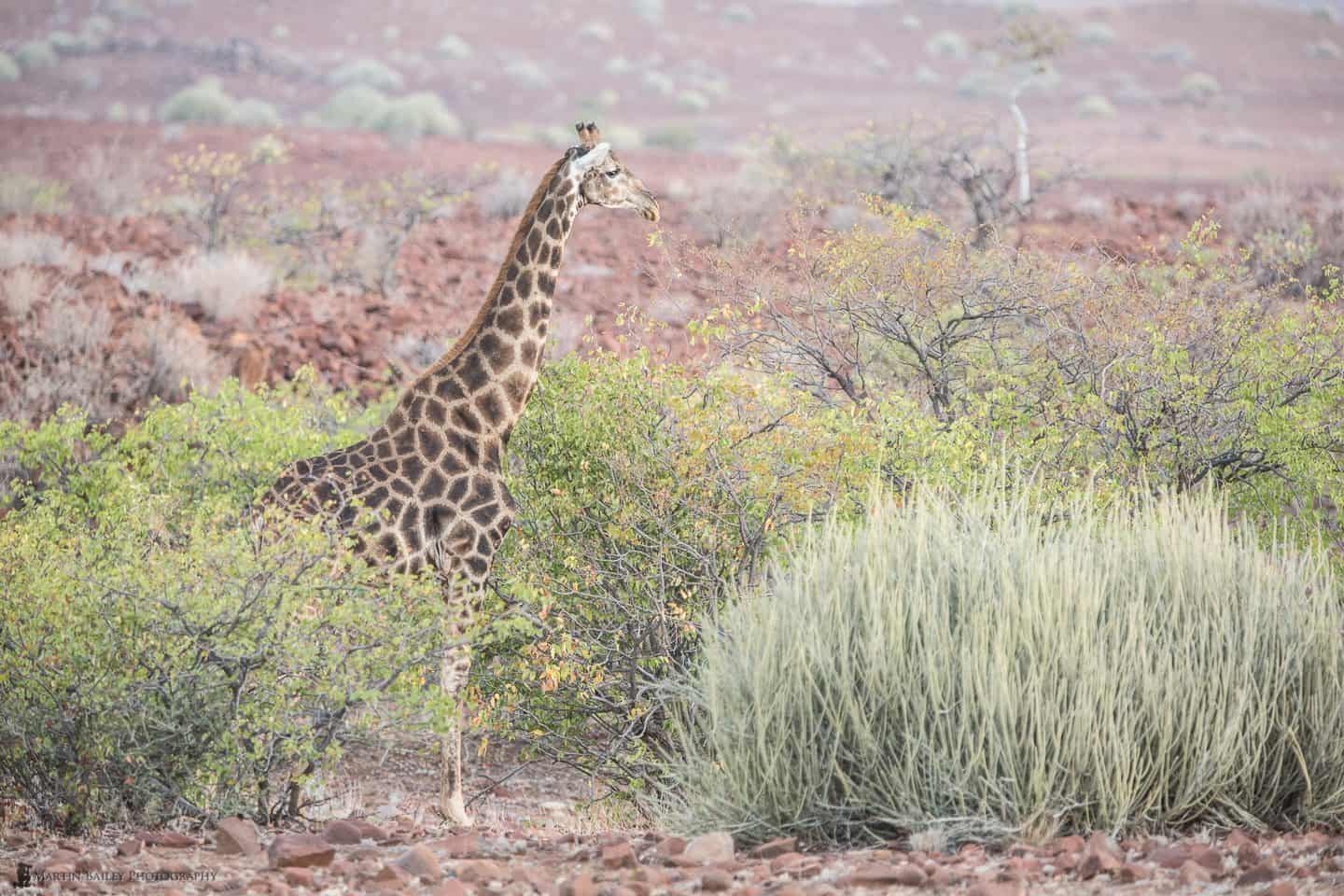
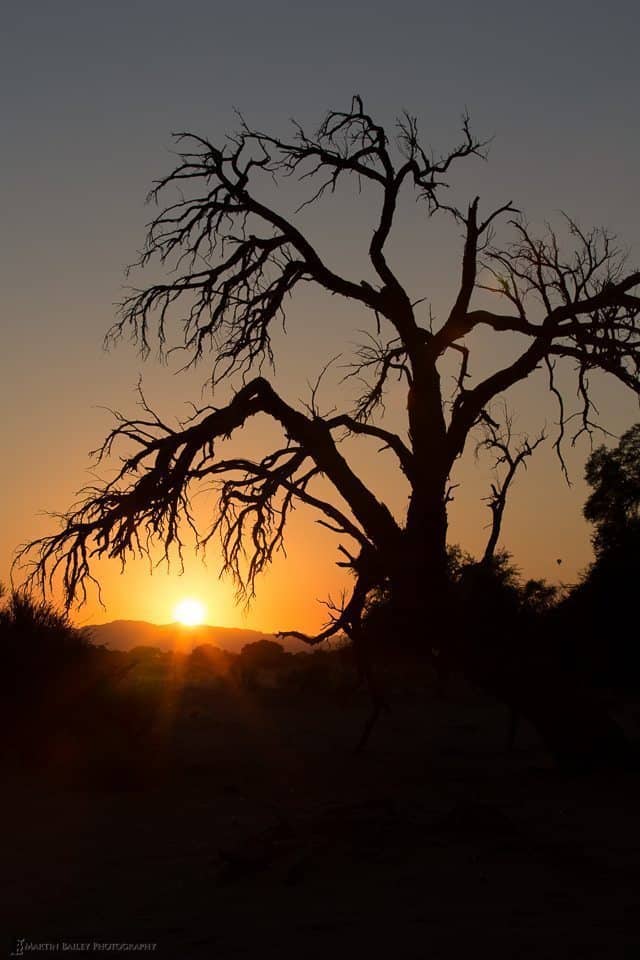
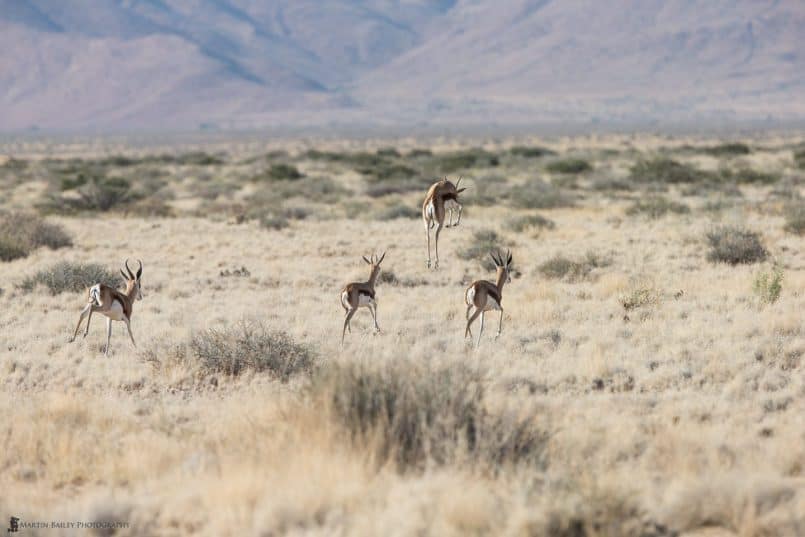
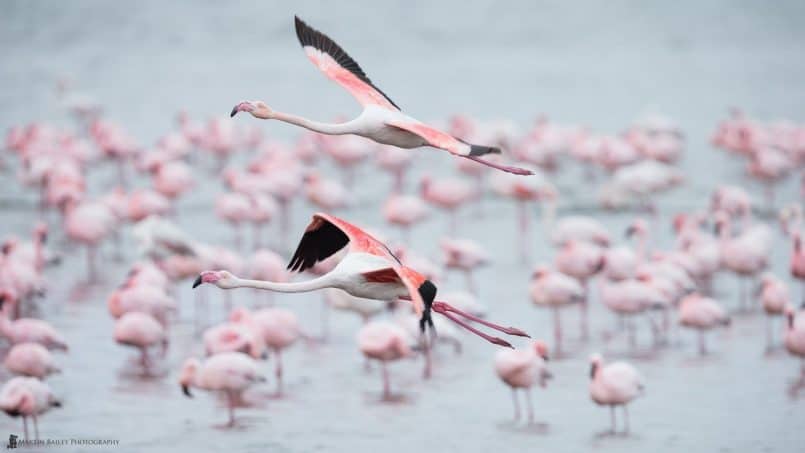
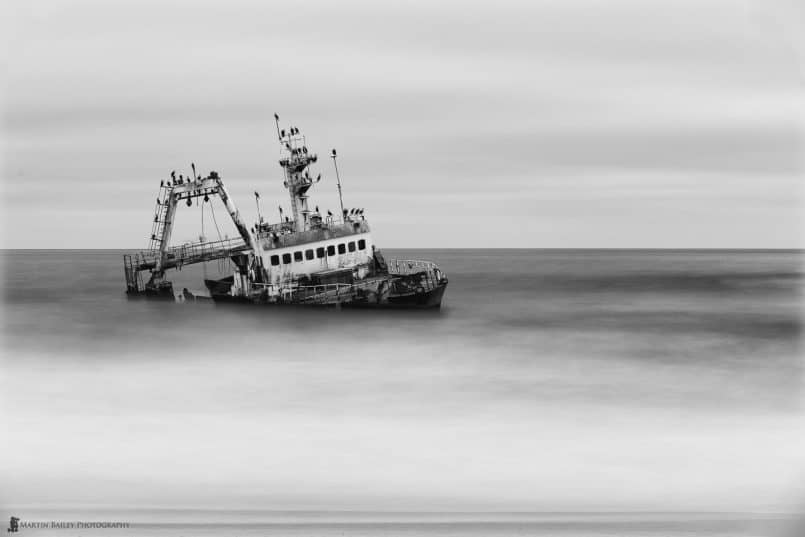


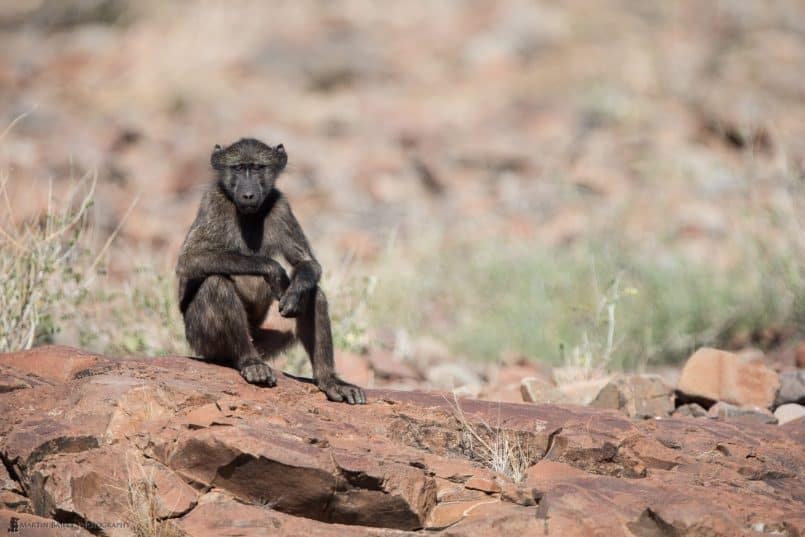

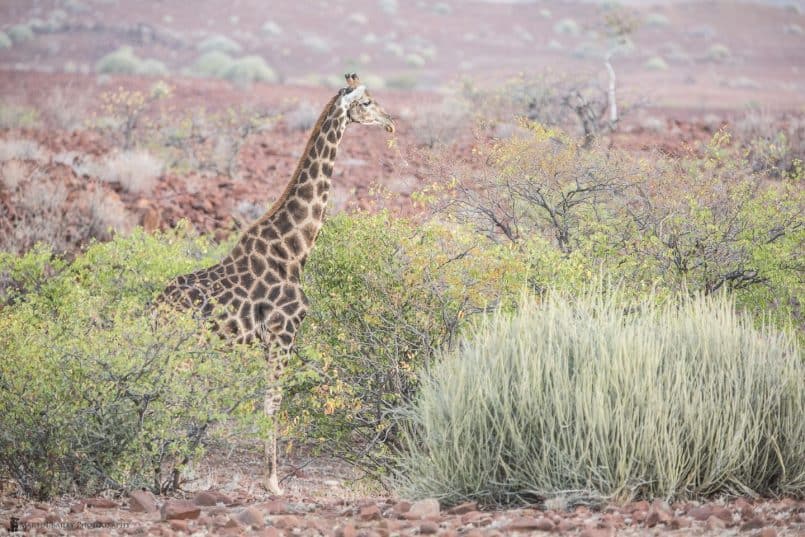


I’m really enjoying this series of podcasts, Martin. I’m one of those listeners who likes the travelogue-style episodes so getting to ride along to South Georgia, Antarctica, and now Namibia has been absolutely fantastic. If this turns into five episodes, all the better! (BTW, love the shot of you leaping up in the middle of Deadvlei!)
Also, I very much appreciate your use of the map to orient your listeners geographically. Very cool.
That’s good to hear Tim. I like doing these travelogue style episodes too, but just don’t get a chance to do them that often now. I’ll do more when I can though. Thanks for listening!
Martin, for the picture of the boat in the water, did you make use of a graduated filter at all? If so which one? Thank you.
No John, I didn’t use any filters for that shot. The bottom of the frame is lighter because of the breaking of the waves, that’s all.
Hi Martin. Thanks for the reply. I also meant to ask you what settings you used for the Shipwreck photograph. I really do enjoy it. Thank you for sharing your experiences with us.
Thanks John! That shot was made at f/11 for 60 seconds, ISO 100.